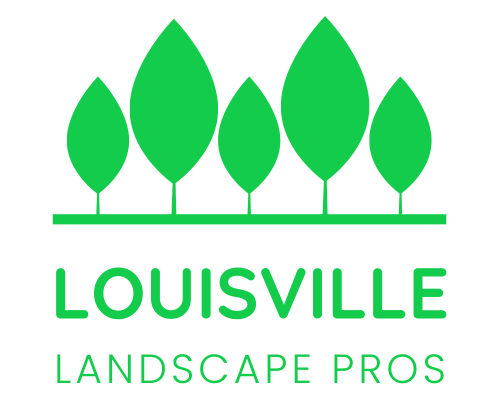Our Blog
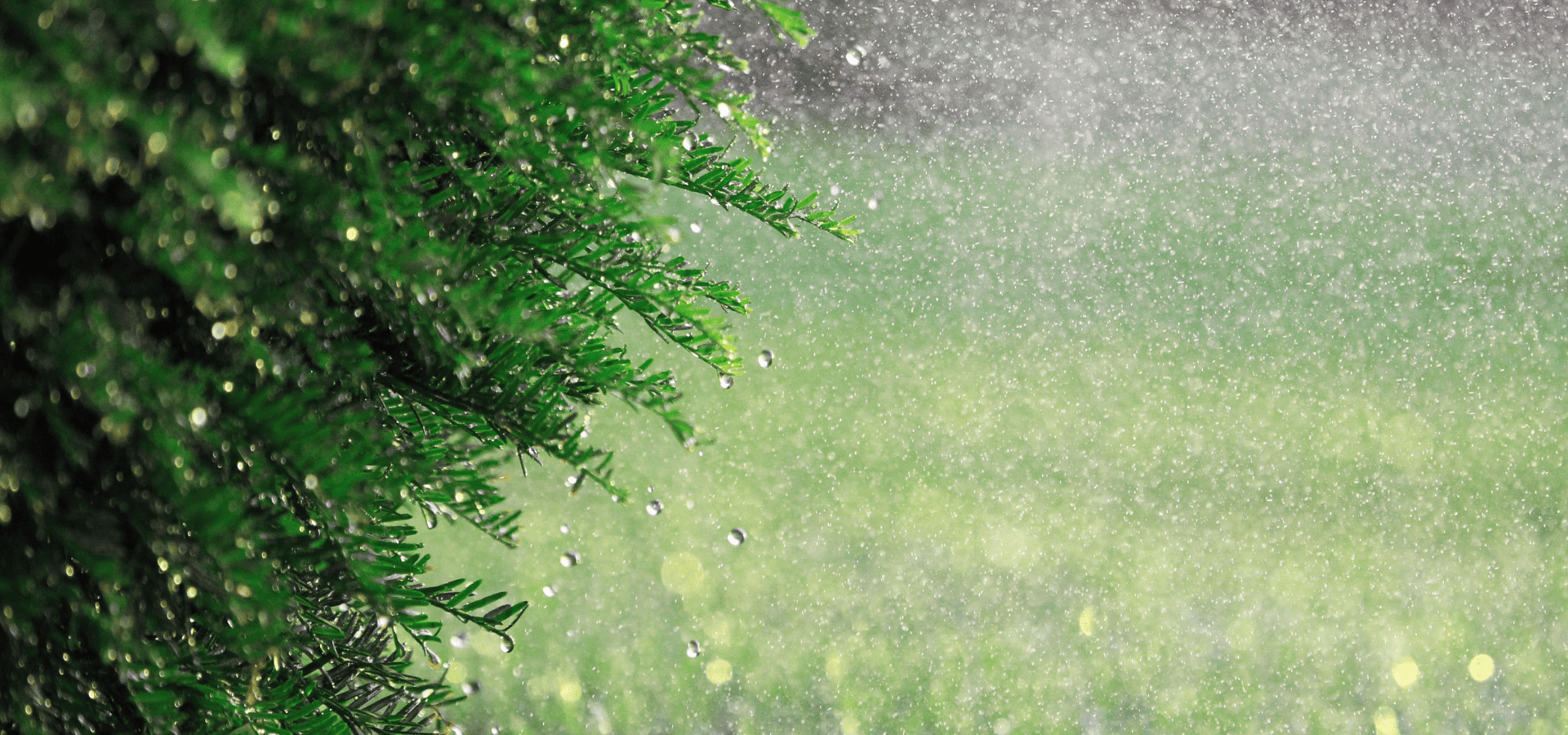
In Louisville, rain doesn’t just fall- It pours. And usually in buckets. Sometimes it rains in long, lazy stretches; at other times, it’s in sudden, theatrical bursts that leave sidewalks steaming and gutters overwhelmed. But regardless of what style the buckets come in, the result of the buckets for homeowners is essentially constant soggy yards, flooded corners, and annoying runoff. Put short, the rain is a real problem for Louisville homeowners. Enter the rain garden: a low-key, low-maintenance landscape feature that nullifies these issues. A rain garden quietly intercepts stormwater, and elegantly too. It filters out pollutants and turns all that Kentucky rain into something beautiful and functional. It’s not a brand-new idea. But in a city where clay-heavy soil, dense development, and chaotic weather all collide, it’s a sharp one. More and more Louisville homeowners are catching on, especially as sustainable landscaping shifts from eco-trendy to good ol’ common sense. If you’re looking to manage water, erosion, and pollinator support and still enjoy a gorgeous yard that doesn’t feel like a retirement project, a rain garden might be exactly the answer to your problems. Let’s dig in! What Is A Rain Garden? A rain garden is a shallow, bowl-shaped depression in your yard, designed (in both structure and soil) to temporarily hold and slowly absorb stormwater. Think of it as a spongey basin, albeit one dressed in native plants. It’s engineered to catch runoff from your roof, driveway, or lawn before it runs into the storm drains. Unlike a standard garden bed, a rain garden is built to soak. Beneath the surface, it’s a mix of drainage-friendly soils. But above? It’s a layered combo of deep-rooted grasses and perennials that slow, filter, and drink up the water. But remember! It’s not a pond. Not even close: ponds hold water, and mosquitoes, and bayou vibes. A well-built rain garden drains fully within 24 to 48 hours. No standing water or creepy crawlies. Just a kitchen sink plug for your garden. Why Louisville Yards Are Prime Real Estate For Rain Gardens Louisville isn’t just bourbon and baseball bats. It’s a city shaped by water, and also one equally challenged by it. Sitting in a climate transition zone between humid subtropical and humid continental, we get long growing seasons here — and plenty of rain. Louisville sees over 45 inches of rain a year, in fact, with spring and summer bringing the kind of downpours that can soak a lawn in seconds. Then there’s the soil. Much of Louisville is built on dense, clay-heavy earth that clings to water like it’s hoarding for winter. That means slow drainage, compacted lawns, and yards that can turn into a full mud bath, even with modest rainfall. Pile on Louisville’s urban development, infill housing, paved-over yards, and impervious surfaces galore, and you’ve got a city with some serious runoff problems. Rain gardens are custom-built for this exact chaos. They: Slow and absorb runoff before it overwhelms the city’s stormwater system Prevent erosion in sloped or frequently saturated spots Filter out oils, chemicals, and sediments before they reach Beargrass Creek or the Ohio River And help recharge groundwater in areas that desperately need better water management So basically, they’re a net positive. Rain gardens are good for your yard, your foundation, your neighborhood… And your conscience. :) But Don’t I Need A Big Yard?
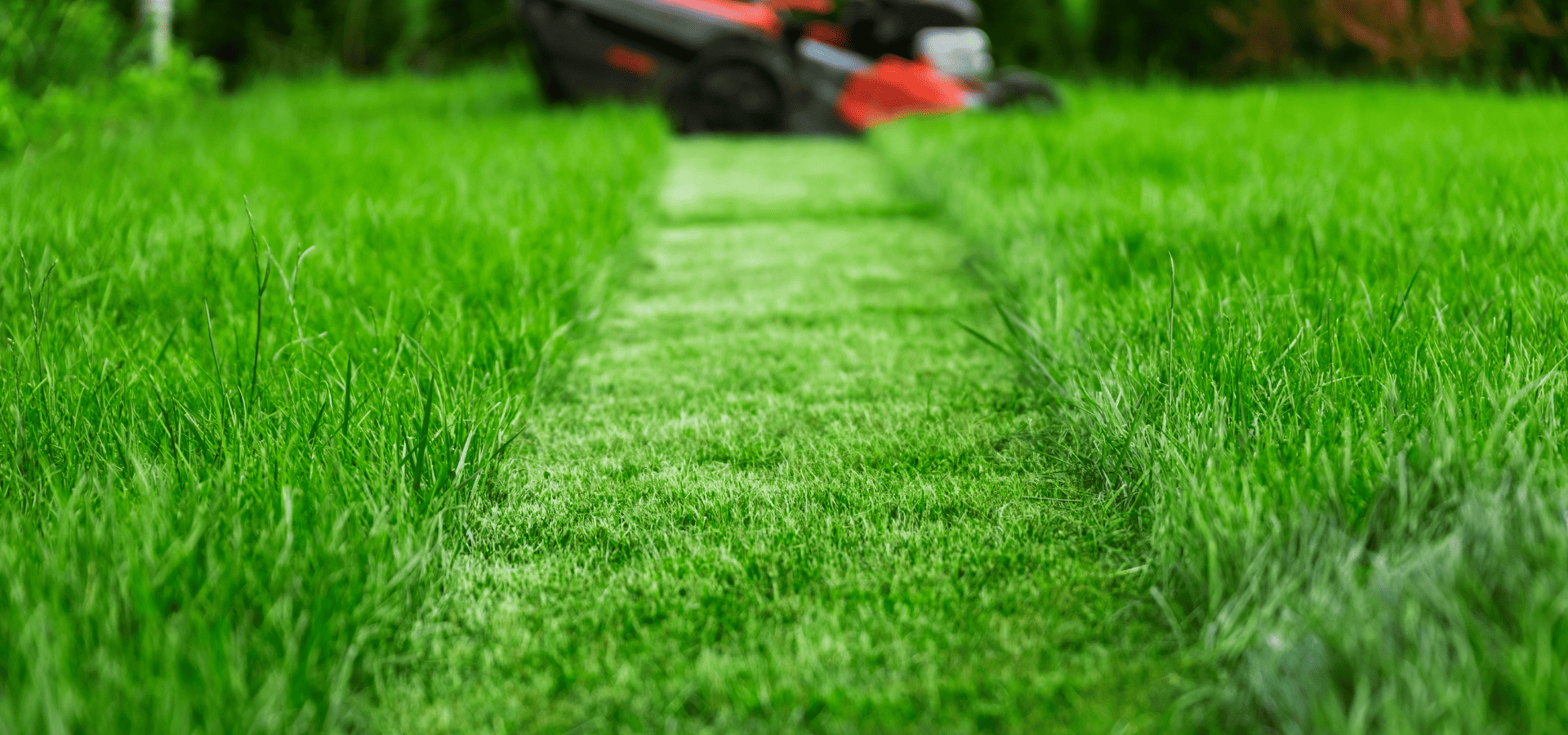
Lawns in Louisville, KY, for better or for worse, come with their fair share of complexities. Have you ever looked out from your Louisville home and wondered, “Why does my lawn look like a battlefield in May and a jungle by October?” Well, you’re not alone. Lawn care in this city is a year-round negotiation. Our climate doesn’t sit neatly in one category. We’re not Southern enough for warm-season grasses to thrive without risk, and we’re not Midwestern enough to coast on mild seasons either. Instead, we get a blend of hot, sticky summers, brisk winters, yo-yoing spring temps, and just enough rain to keep you guessing. Unfortunately, if your lawn here feels like it’s constantly one step behind, the truth is that it probably is. That’s not that you’re doing it wrong: most people are doing it wrong here!. Basically, all generic lawn care advice just isn’t able to match the tempo of Louisville weather. But this guide does. We’re not here to throw a one-size-fits-all checklist at you. We’re here to map out a rhythm that actually works — the right moves at the right time, all tailored to the transitional chaos of Zone 6b/7a’s turf life. Let’s talk timing, timbre, and turf sanity in Kentucky's wild weather zone. Know Your Lawn Type Before you start sharpening mower blades or tossing fertilizer around like confetti, you need to know what kind of grass you’re actually working with. Louisville is smack in the “transition zone”. That means lawns in the Louisville area can technically support both warm-season and cool-season grasses. But that doesn’t necessarily make things easy. Most homeowners, rather wisely, stick with cool-season turf blends like: Tall Fescue: Tough, drought-tolerant, deep-rooted — Louisville’s local MVP. Kentucky Bluegrass : A bit fussier, but it will grow drop-dead gorgeous if managed right. Perennial Ryegrass : Fast to germinate, and often used for overseeding. You’ll also spot warm-season grasses like zoysia or bermudagrass in some yards. However, grasses built for warmer climates like those tend to throw in the towel when winter punches back. Either way, the first step of your lawn care schedule in Louisville is to simply identify what you’re working with. At the broadest level, if your grass peaks in spring and fall, then fades in high summer, you’re probably working with a cool-season variety. So, build a lawn care schedule that follows that rhythm. Spring Lawn Care
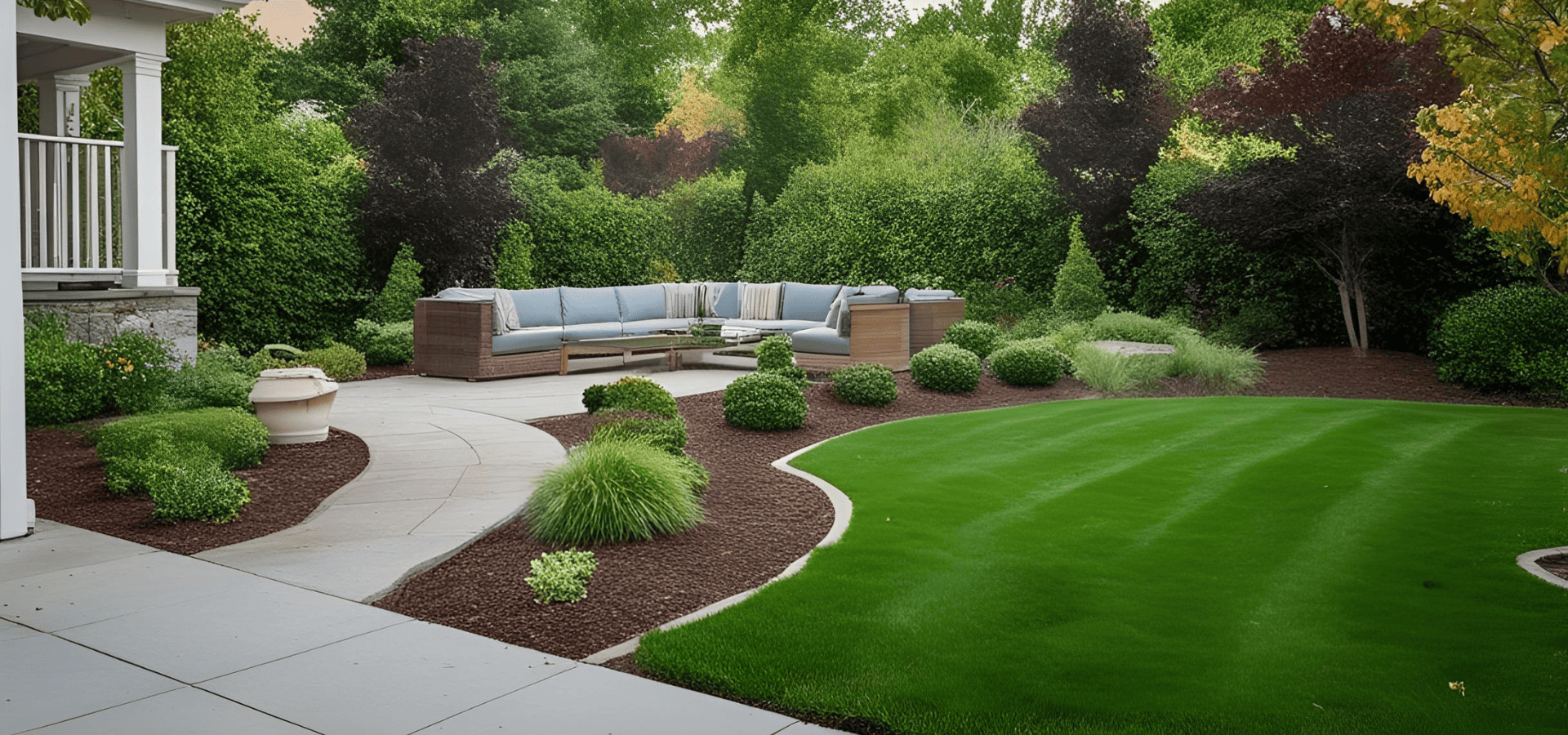
Landscaping can bring up the value of your rental property and help you fetch a higher price on the market. However, while tenants may appreciate the landscaping, your tenants likely aren't going to place a huge focus on it since it's not their place and they won't be staying there permanently. As such, it doesn't make sense for you as a landlord to invest heavily in landscaping . You still want the landscaping to bring up the value of your home though. So the key is to find a balance of enhancing your aesthetics to boost curb appeal while not overdoing it to the point where tenants wouldn't be willing to pay more for a nicer outdoor space. This means you should be focusing on cost-effective landscaping projects that can help you get a better price for your rental home and that don't require too much maintenance. Here are the best landscape projects for rental properties as well as some additional considerations when landscaping your rental property. Important Considerations When you landscape your rental property, you don't want to create an outdoor space that requires lots of maintenance. Otherwise, you'll either have to be the one doing the maintenance work or have to hire a professional landscaper to do it, which is extra cost. The point of landscaping is to allow you to earn more from your property, so it doesn't make sense if you're going to end up earning less from your property than you would if you didn't have to perform the landscape maintenance in the first place. Still, no landscape in the world can require zero maintenance. The key is to make this maintenance minimal so that you can easily do it yourself and the maintenance work will only need to be done ideally only once per month or even quarterly. The watering of plants is usually a key concern though as it needs to be done daily. Landlords will need to make it clear whether the tenant is expected to water the plants. If you want to make your property more attractive to your tenants, it's worth investing in irrigation systems that can automate the watering as well as reduce the maintenance burden on you if you're the one doing the maintenance. Finally, make sure not to have any particularly expensive features and elements, whether it's for your outdoor area or in your own home. Your tenant’s stay should be comfortable, so bigger investments like a good temperature control system that enhances their living experience are fine and will fetch you a higher price. However, expensive elements, especially those that don't add much or any practical value, should be avoided. First of all, while we don't want to question their integrity, expensive items create the temptation for theft. More importantly though, you can't assume that your tenants will take good care of your place like you do. After all, it's not their place. You should have taken two months’ deposit or so from them and set it aside to cover any necessary repairs, but even so, it's simply not worth investing in unnecessarily expensive items that won't help you get a higher price. An affordable resin-wicker outdoor sofa will do the same job as an expensive leather one. And both would likely get you the same price for your home. The point is, don't invest in unnecessarily expensive elements that won't serve much practical purpose. Now that you know what to keep in mind when landscaping your rental property, let's go over the best projects to fetch you a better price. 1. Outdoor Living Spaces
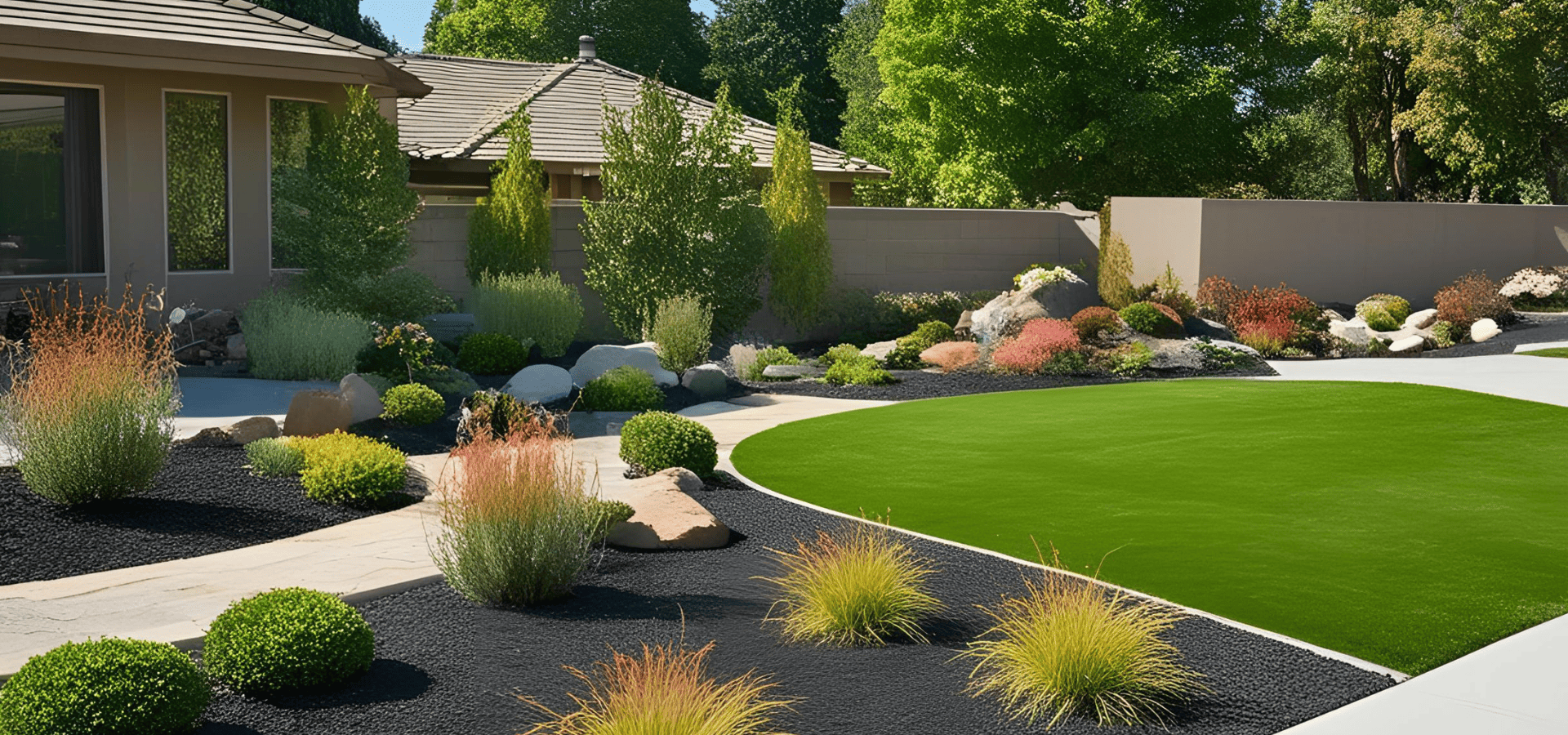
Wildfires have always been an issue, but in recent years, they have begun to happen more and more frequently. While you might believe the chances of it happening to you are low, it’s always better to be safe and sorry. Fire-resistant landscaping slows the spread of wildfires and can significantly reduce any potential fire damage and the chances of fires reaching your home. While fire-resistant landscaping won’t be able to fully stop wildfires, especially more serious ones, it will slow down the spread and intensity as it reaches your home, giving you crucial time to escape or for firefighters to arrive and do their work. Even for urban homes, fire-resistant landscaping can lower the chances of accidental fires from loose embers or cigarette butts. In short, fire-resistant landscaping significantly enhances your home’s fire safety, whether you’re living in an urban or rural area. If you’re wondering how to do this, you’re in luck. For those looking for a professional to help them out, our team of experts at Louisville Landscape Pros will be glad to help you out. For those looking to perform the fire-resistant landscaping themselves though, in this article, we’re going to be covering exactly how to go about keeping your home protected from wildfires and regular fires. Key Principles First off, this article isn’t going to be exhaustive. There’s going to be things that we don’t cover. But by knowing the key principles, you can apply them to come up with your own strategies to make your outdoor space fire-resistant. 1. Defensible Zones
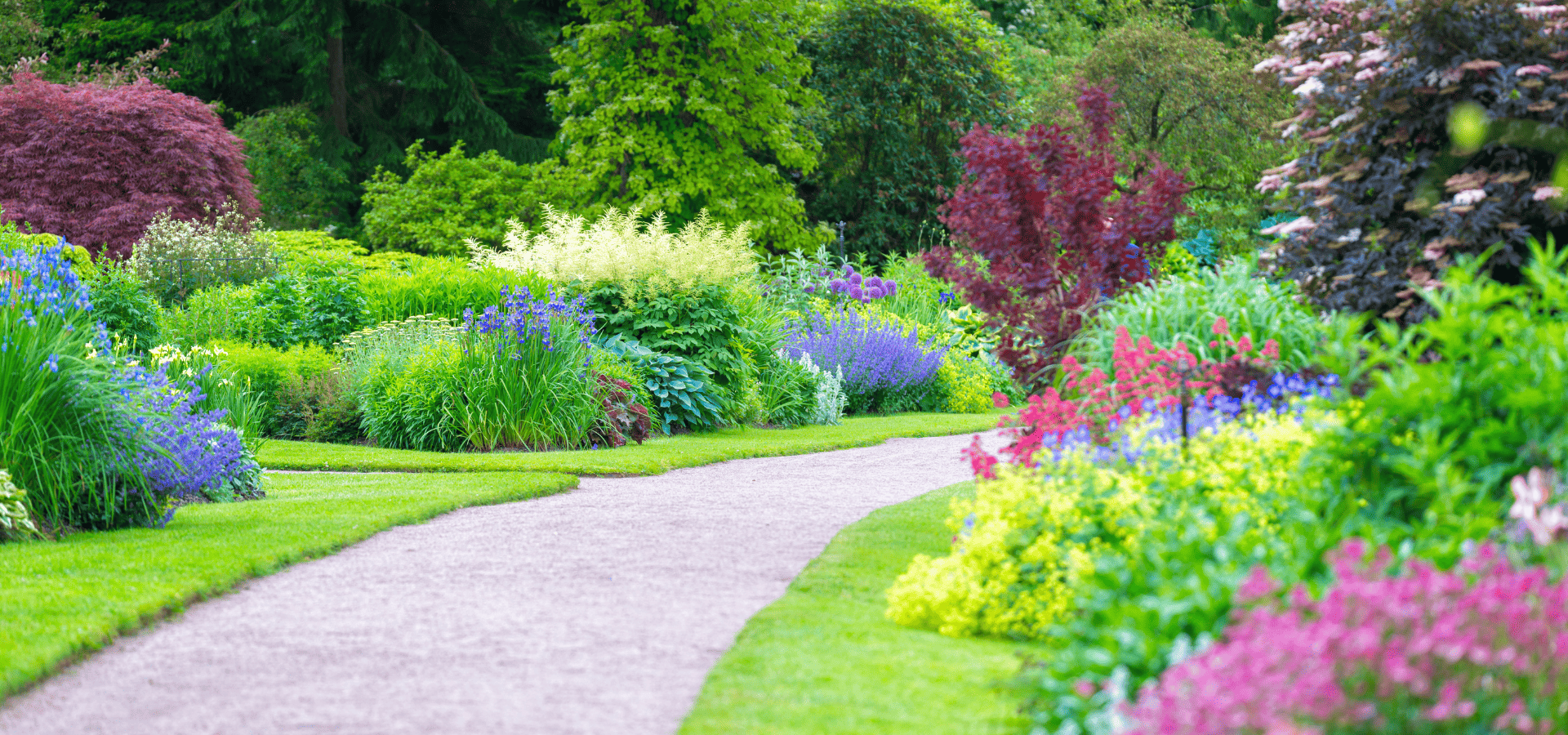
If your landscape only looks great in the spring, fall, and summer, you're missing out on winter, which means your landscape is 25% less effective aesthetically as it could be. Or worse, some people’s gardens only look good in the spring and fall, not even in the summer, which means a 50% loss of effectiveness. So why waste your outdoor space’s potential? With a little thought and smart landscaping, you can turn your outdoor space into a year-round stunning oasis. Read on to find out how! (Or feel free to contact Louisville Landscape Pros ) 1. Spring Spring is the first season after winter when everything wakes up, so you want to start things off with a bang. This means vibrant colors and landscaping to ensure you're creating the best environment for your plants to emerge strong. Plants This is the season for bold, vibrant colors and flowers. And needless to say, they should bloom in spring. This means plants like daffodils, azaleas, petunias, and so on. As you’re choosing your spring-blooming plants, make sure to take note of when they bloom and for how long, as certain varieties only bloom for a few weeks. Then, incorporate a variety of plants if needed to ensure that your garden will have color throughout the season. Pruning & Trimming Pruning and trimming are key maintenance tasks as your plants will be looking to maximize any nutrients they have to have a strong start. As such, it’s imperative that you cut away any damaged or dead parts so that no nutrients and energy will be wasted on those pointless parts. Pruning and trimming also gives you more vibrant plants, as naturally, healthier plants grow better. Your Lawn Part of what makes your garden and landscape beautiful is your lawn. Your lawn is usually just there, green and pristine, until it’s not. Most people take a lush, green lawn for granted, but the moment there are any issues, any defects, they’re quite noticeable and will ruin your aesthetics. Since your lawn, like the rest of your garden, is just emerging from winter, it's crucial that you give it the support it needs to emerge strong. You don’t want to overfertilize it, but setting a good foundation and allowing your lawn to emerge strong is key to its overall health for the rest of the seasons. Assuming you’ve done your fall prep properly, your lawn should have a headstart already, but it’s still important to do some extra work to ensure your lawn is set up for success. First off, due to the cold and inactivity, winter can freeze your soil and cause it to become compacted, and there may also be a layer of thatch that blocks essentials like air and water from reaching your roots. As such, dethatching and aeration may be needed if you see that water seems to be pooling up and if the layer of thatch is more than 0.5 inches. Then, as mentioned earlier, to aid its growth, apply slow-release fertilizer to give it the nutrients it needs to thrive. The winter may also leave some gaps or cause some thinning. If that’s the case, you should also overseed any areas that are lacking to ensure your lawn is healthy all around. 2. Summer
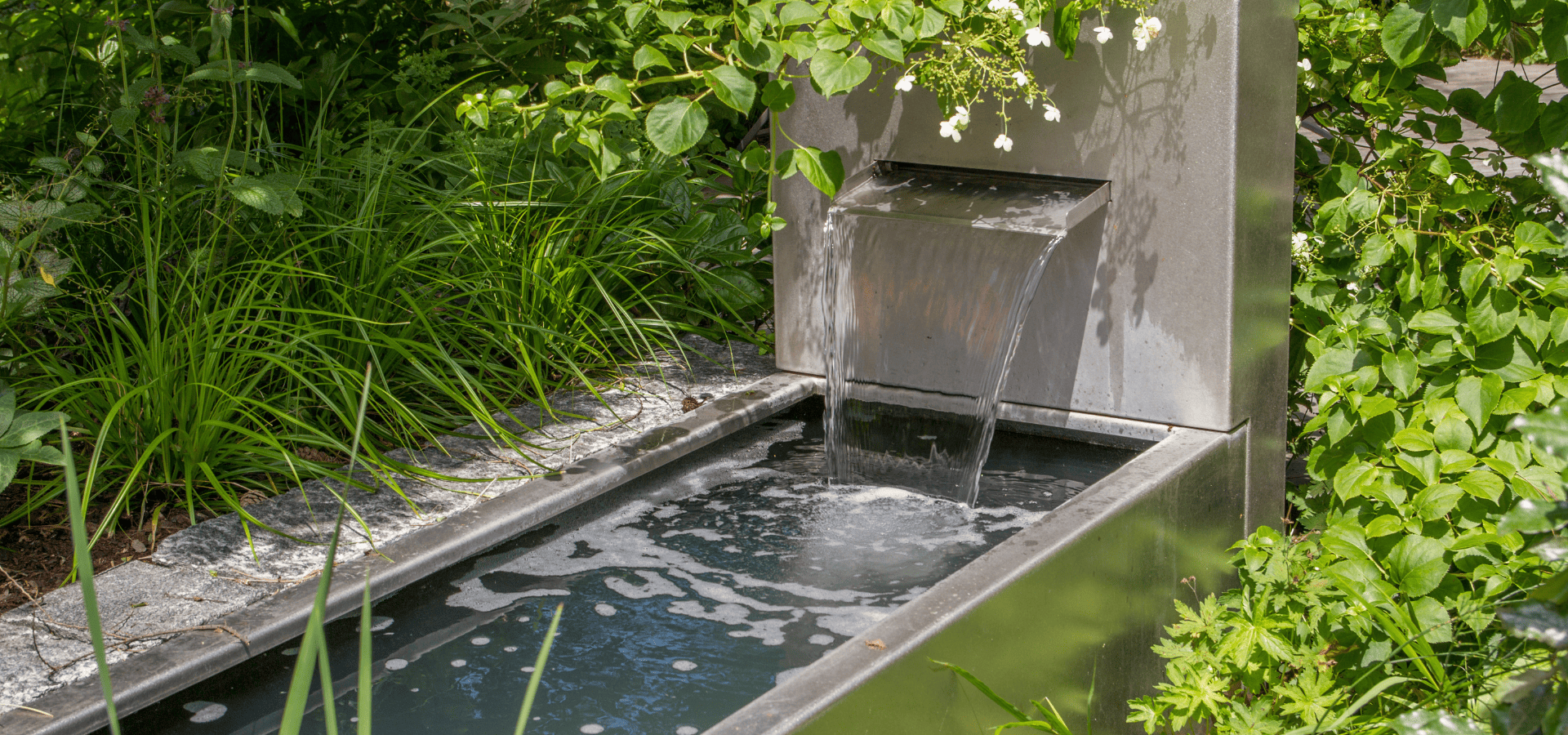
If you don’t already have a water feature in your landscape, what are you waiting for? Water features elevate the look of any landscape, no matter what your style or aesthetic is, as long as you’re choosing the right water feature. Maybe you’re thinking “Oh, a fountain wouldn’t fit in my minimalist landscape” or “A waterfall won’t do much good for my cottage garden”. Well, there’s actually a very diverse range of water features to suit just about any aesthetic and take it to the next level. If you don’t have a water feature, you’re missing out. From the grandest landscapes to quiet minimalist ones, any outdoor space will benefit from the serenity and soothing sound of water flowing. For those in search of the perfect water feature for their landscape, you’re in the right place. Let’s get started. Water Feature Types First, let’s quickly go over the various water feature types available for you to choose from. 1. Fountains Everyone knows what fountains are. Out of all water features, fountains are the most versatile and customizable. Fountains can come in all sorts of shapes and sizes, which also means that they can be customized to fit a variety of aesthetics. Despite this, even the simplest fountains tend to look man-made, so despite their versatility, there are still landscapes where more natural-looking water features are more apt. 2. Waterfalls Waterfalls are usually more grand and majestic, no matter how simple you try to make them. This inherent grand look makes waterfalls perfect for acting as focal points or to complement grand landscapes like luxury outdoor spaces. 3. Streams Streams are the opposite of waterfalls. They bring a very quiet, soft, peaceful vibe, making them perfect for serene landscapes like Japanese Zen gardens. 4. Ponds Ponds bring a natural vibe to the table. They’re usually not grand or modern, but they simple look natural, and most ponds tend to have similar aesthetics. As such, ponds tend to fit best in less modern spaces like cottage gardens. 5. Reflecting Pools Reflecting pools are, as the name suggests, pools that reflect light, almost like mirrors. These pools are meant to invoke feelings of reflection and deep thought, and they give off serene, elegant vibes. 6. Birdbaths Birdbaths are literally for birds to bathe and drink from, thus the name. Birdbaths bring a rustic, countryside charm to your outdoor space, making them perfect for rustic landscape styles like cottage gardens. 7. Water Walls
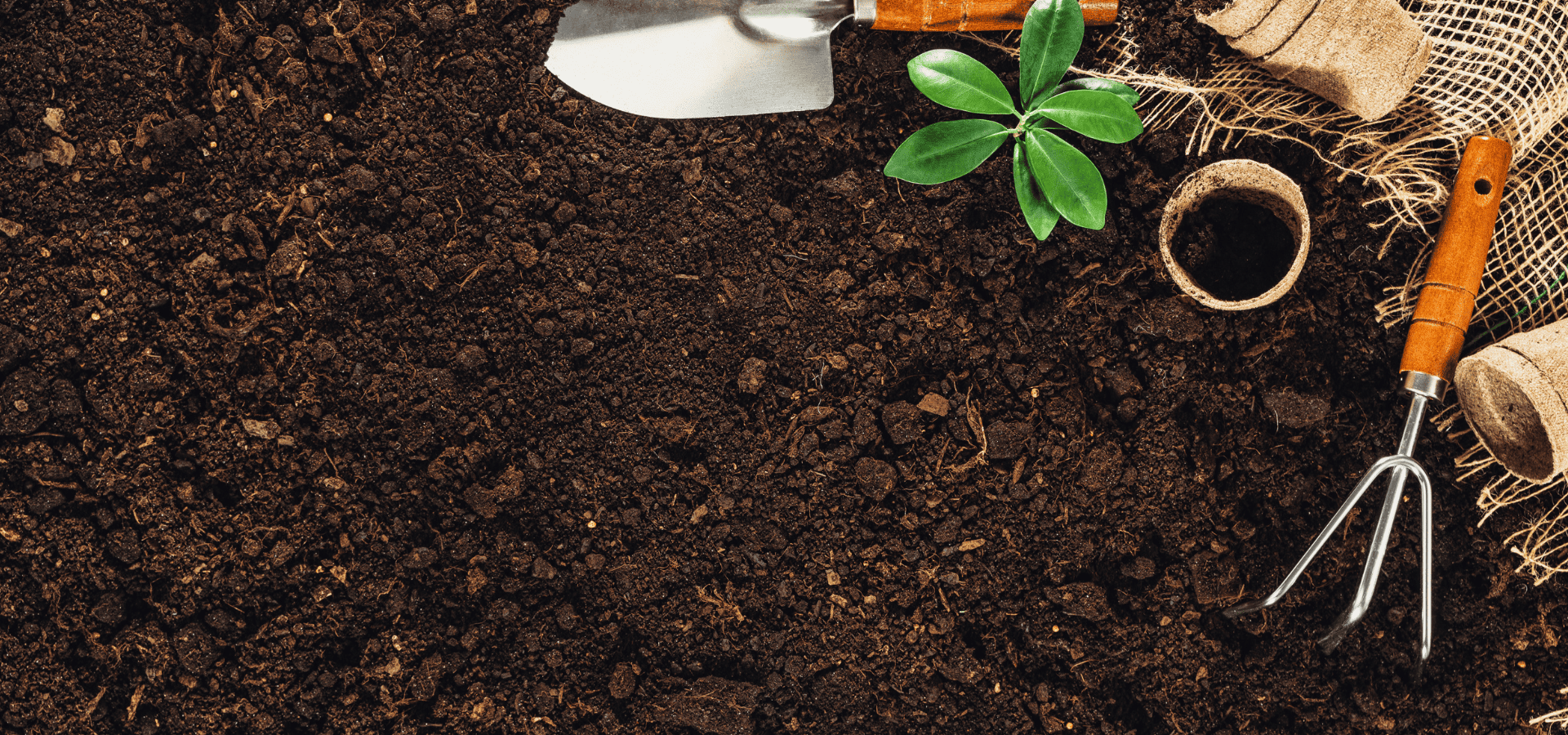
Plants help convert carbon dioxide into oxygen and reduce carbon dioxide levels, so simply by having a garden of some sort, you’re already contributing to environmental friendliness. However, if you’re not careful, you may end up actually increasing your carbon footprint and harming the environment even more than if you didn’t have a garden. Plants need water, fertilizer, and sometimes chemicals like pesticides and herbicides too. All these have carbon footprints associated with transport and production. As such, taking measures to minimize your landscape’s carbon footprint is key to ensuring you’re actually helping the environment and not harming it further. Here’s how. 1. Water Efficiency & Conservation First off, watering your plants is going to make up a huge part of your maintenance routine. Since you’ll be doing it every day, the carbon footprint can be pretty significant over time, especially if you’re carelessly watering your plants. Water requires treatment, and it needs to be transported to your house through pipes. These processes all require energy, and since the United States isn’t big on renewable energy, non-renewable energy is used for all of these, which translates to carbon emissions. As such, you need to not just be conscious of not wasting water, but also ensure that when you water your plants, you’re watering them efficiently to use as little water as possible. Irrigation Systems First off, when you water your plants, you want to water them efficiently. This means not just delivering the right amount of water, but ensuring they reach your plants’ roots. Even the most skilled landscapers will find it hard to be more accurate than modern irrigation systems, as these systems can deliver exact amounts of water. Not only that, but irrigation systems are able to deliver the water directly to your plants’ roots, ensuring no water is lost to the surrounding soil, further increasing water efficiency. Nowadays, more advanced irrigation systems are even able to factor rain into account and adjust their water levels accordingly, allowing for even better water efficiency. It goes without saying that these systems won’t be cheap, but you’ll be using less water on your plants, which means your water bills are going to be lower. Over time, these savings can add up to be quite substantial, sometimes even amounting to whatever you spent on the irrigation system or even more. Plus, either way, you’d be doing your part for the environment. Recycling Rainwater
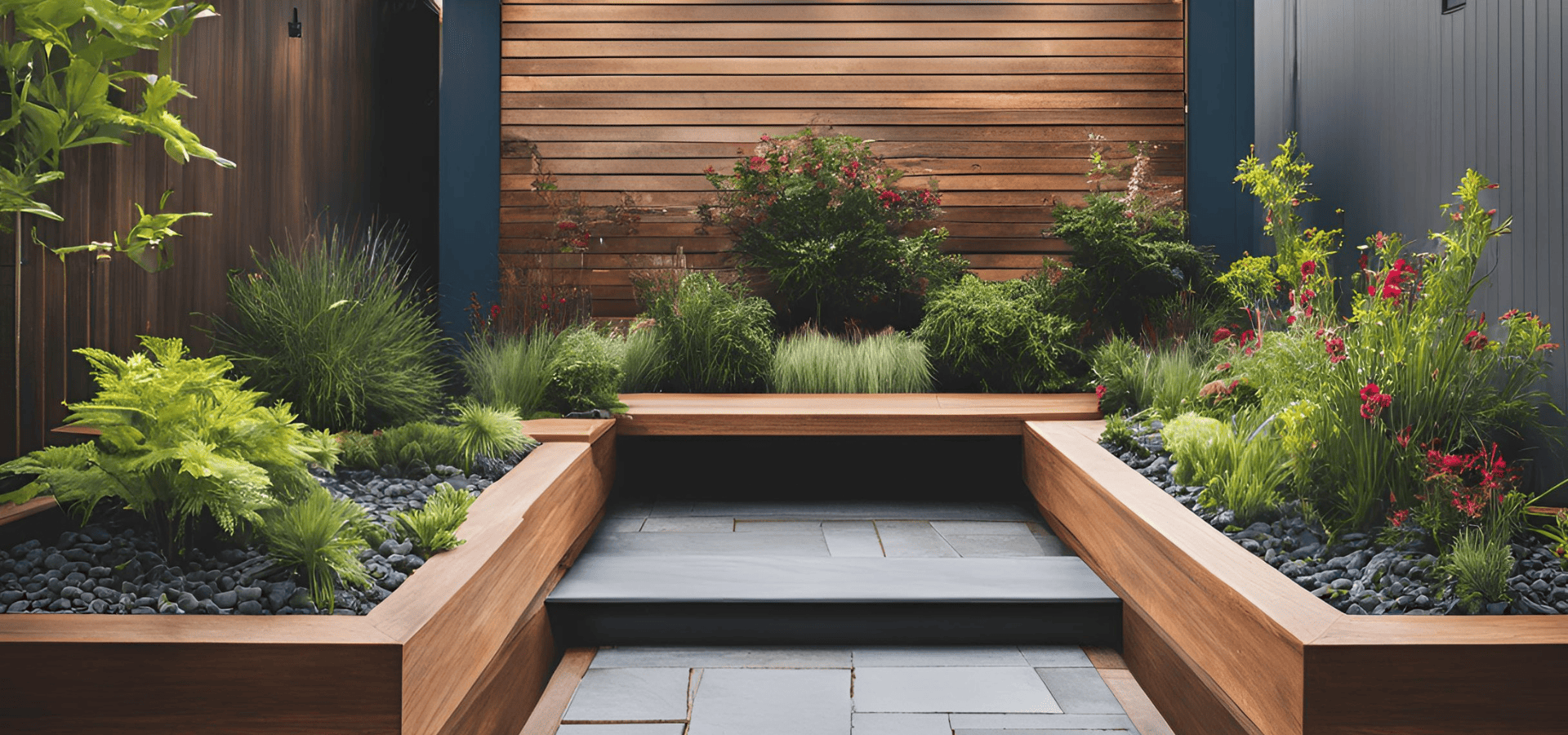
It’s all too easy to say that your space is too small and that you can’t make anything notable out of it, and to just give up. After all, if you can only fit a few potted plants inside, what’s the point? Well, there are actually ways to fit tons of plants into small spaces. By making use of whatever vertical space you have and following certain rules, you can have yourself a beautiful small garden in a small space. At Louisville Landscape Pros , we've landscaping hundreds of homes and all sorts of small spaces, so you can trust our expertise if you're in need of some small-space landscaping. For those looking to perform their own landscaping though, read on to learn how to maximize your small space and turn it into a green oasis! 1. Vertical Gardens This is one of the most important elements to have if you’re working with limited space. Vertical gardens are gardens with multiple layers, which means you can grow plants multiple levels of plants without using up more land space. Even for larger spaces, vertical gardens are great ways to maximize space and grow even more plants, so they’re definitely a must-have for small spaces. Other ways to make use of vertical space include wall planters and hanging baskets. No matter how many plants you have on the floor, you can always have some more along your walls. These are all strategies to help you get more plants into your limited space. For vertical gardens though, note that there can be challenges like watering and maintenance, as well as limitations on the plants you can use. Plants on the ground are easy to water, but the ones on the higher levels of vertical gardens may require you to reach for them or even climb onto a chair. This can be tiring in the long run and even dangerous. So when you incorporate a vertical garden, it’s best to install an irrigation system to help you with the watering. As a bonus, irrigation systems also improve water efficiency. 2. Neatness
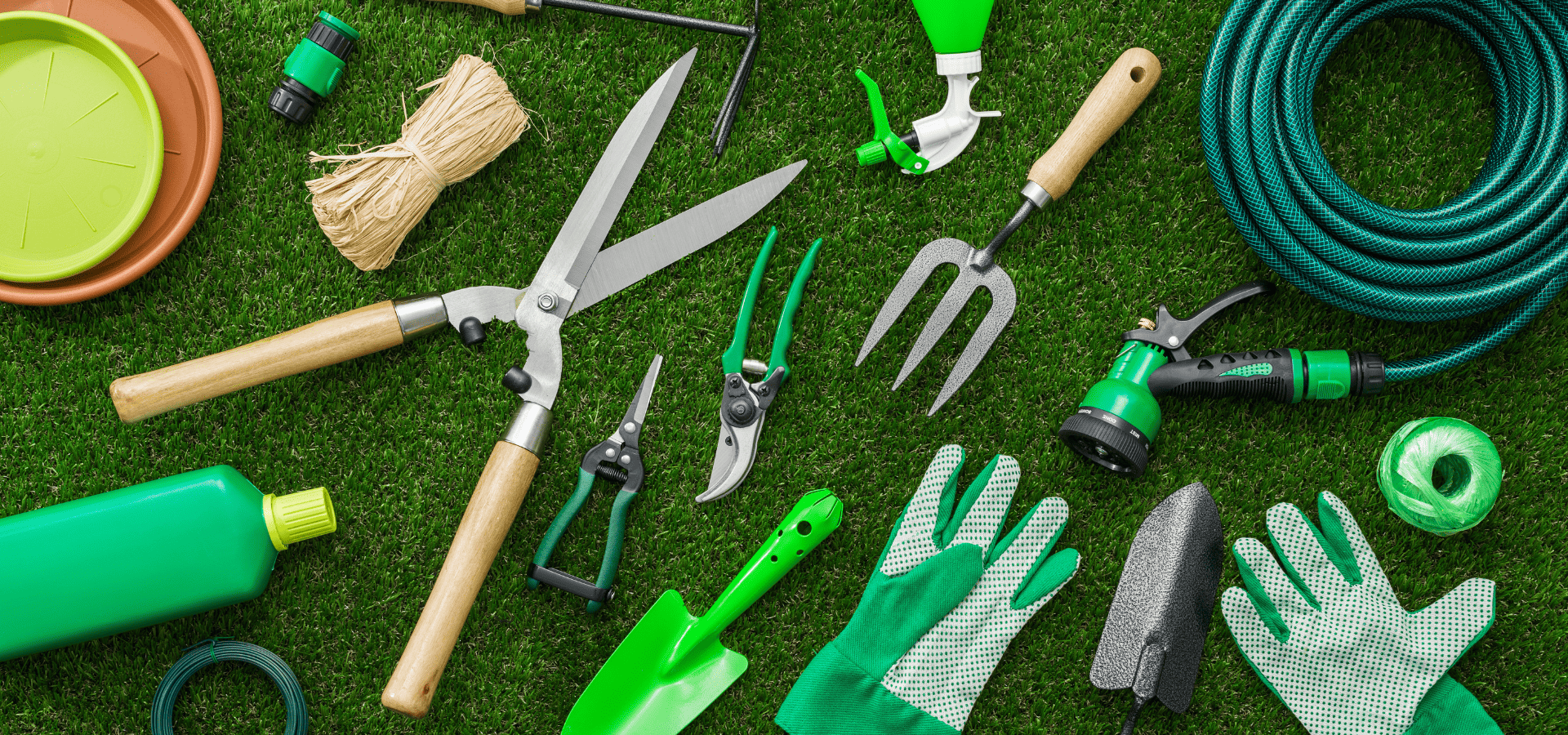
Most people know the standard landscaping tools like lawn mowers, shears, shovels, rakes, and so on. But if you’re looking to do more serious gardening or even start a landscaping business , you’re going to need to know what’s out there. Here’s the full list of landscaping equipment that gardening enthusiasts and potential business owners should know. Hand Tools First off, let’s start with the more basic non-powered tools. These are the more cost-effective options that will be suitable for use by casual gardeners. 1. Pruning Tools One of the most frequent maintenance tasks you’ll have to perform is probably pruning. Pruning diverts nutrients to the right places, lowers the risk of diseases, and encourages healthier growth. Here are the tools used for this essential task. Hand Pruners: Hand pruners are the smallest type of pruners. They’re meant for use with one hand and are used for cutting smaller branches or dead blooms. Loppers: Loppers are essentially larger hand pruners. Loppers have very long handles to provide leverage for cutting large branches, but other than that, they’re shaped pretty much the same as hand pruners, with the same type of blades, just larger of course. Hedge Shears: Hedge shears, as you’d expect, are for cutting hedges and shrubs. They have much longer blades, and their blades are straight, unlike pruners and loppers that have curved blades. This long straight shape makes it easy to shape shrubs and hedges into clean shapes and make them uniform throughout. 2. Shovels/Spades Everyone knows what shovels and spades are, so not much explanation needed there. It’s normal to be confused between shovels and spades though, and many people think they’re the same thing, even though they’re not. Shovels have curved or pointed bowl-like blades while spades have sharper, flat rectangular (or squarish) blades. As such, they’re meant for different tasks. Given the curved shape of shovels, they’re meant for moving loose dirt or digging shallow holes. Their curved, less sharp shape means it’s hard for you to cut too deep into the ground, so they’re perfect for digging shallow holes or moving loose dirt where you want to dig a little below the surface and scoop up the soil rather than go deep. On the other hand, the sharp, rectangular shapes of spades make them ideal for cutting through compact, hard soil or digging deeper, more precise holes. 3. Rakes
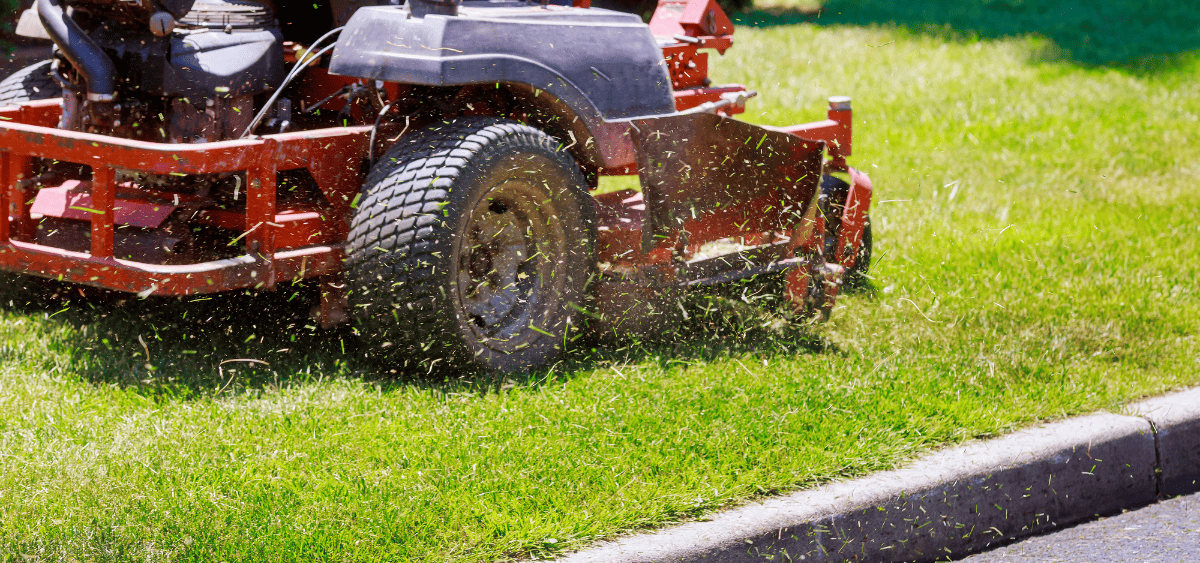
Your lawn is a crucial part of your landscape’s aesthetic appeal. It’s just a patch of green grass, and most of the time, people won’t notice it very much–that is until it starts to look unsightly. Lawns are one of those things where people take for granted that they should look great all the time, so when they don’t, they really stand out. Unfortunately, lawn care isn’t as simple as just lawn mowing. Lawn mowing does make up a large part of lawn maintenance, but without other maintenance, your lawn is soon going to fall apart. So if you’re looking to learn how to keep your lawn in tip-top condition all the time, let’s begin. Alternatively, feel free to contact Louisville Landcape Pros for a hassle-free, hands-off solution. 1. Mowing Since mowing is going to make up the largest part of your lawn maintenance routine, let’s start with that first. Your Grass Type You may or may not know this depending on how involved you are with your lawn, but there are two main grass types for lawns–cool season and warm season grasses. Cool-season grasses are used for regions where winters are colder and summers are milder. Warm-season grasses are best for regions where winters are milder and the summers are hotter. Warm-season and cool-season grasses have different active growth seasons, mowing requirements, water requirements, and so on, so you need to know your lawn grass type to be able to tailor your maintenance. Frequency Cool-season grasses grow the most in spring and fall, but even warm-season grasses still grow steadily during these seasons, so weekly mowing is recommended, whether it’s warm or cool-season grasses you have. Nailing your lawn care schedule for Louisville is an important part of success, so you need to time your lawn care carefully. In summer, this is when warm-season grasses grow the most actively, so you’ll need to mow once every 5-7 days, and possibly even more if you see them growing extremely quickly. For cool-season grasses, their growth slows down in the summer, so you should only need to mow once every 7-10 days. In the winter, even the growth of cool-season grasses will slow down a lot, so whether it’s cool or warm-season grasses, you should only need to mow once every few weeks, or even none at all if your grass is in dormancy. So those are general guidelines for each season. However, there can be exceptions. You may need to mow more or less often depending on your grass species. You’ll know it’s time to mow when the grass blades are getting long or bending over, or if you see uneven patches. How To Mow
